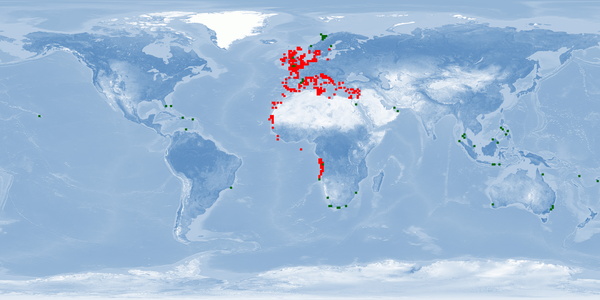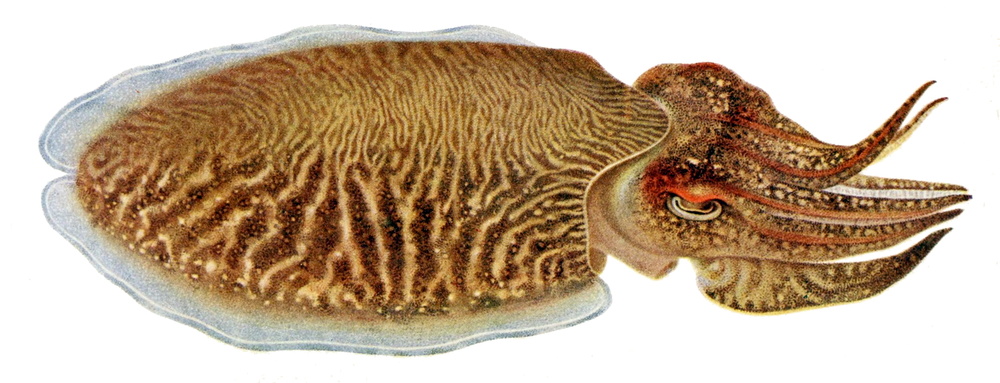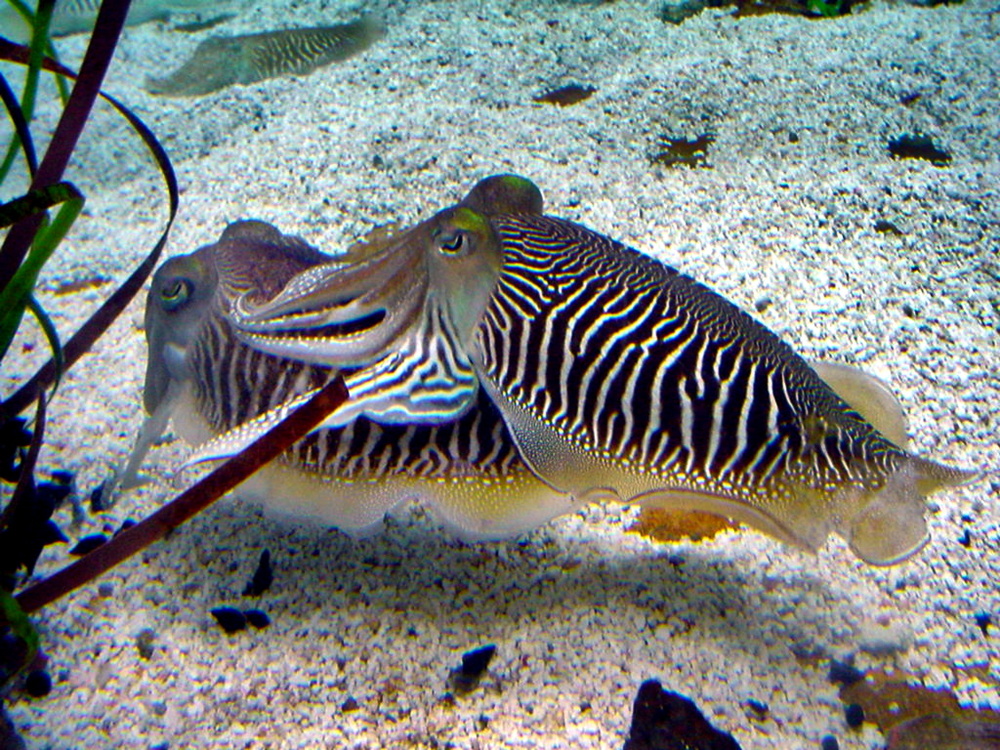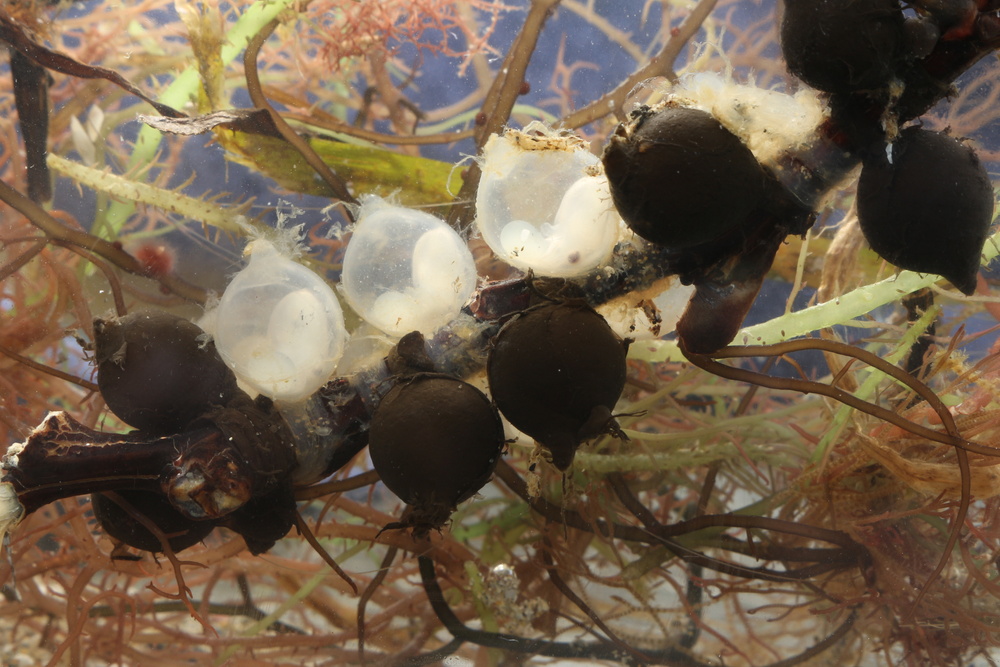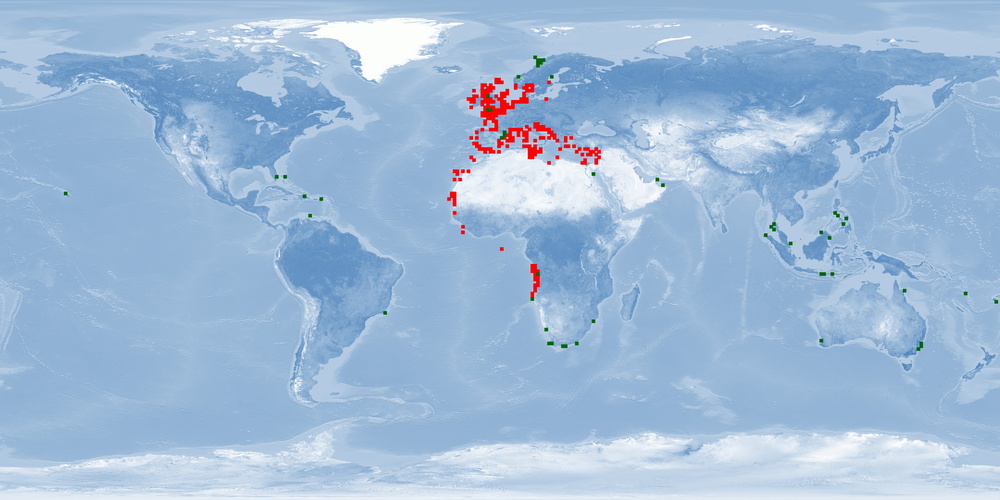Farming remarks
Sepia officinalis is mostly found in the eastern Atlantic and in the Mediterranean Sea, attaining interest for fisheries and high market value; and it is used as an animal model for biological and biomedical research, for aquaculture production, and also for public exhibition in aquariums. However, the main bottlenecks in the S. officinalis culture are reproduction, feeding, and nutrition, which need to be solved before applying them to an industrial scale for human consumption. Though it is already cultured for the complete life cycle in consecutively bred generations, wild individuals (eggs) are still being introduced to improve genetic pools. Detrimental for welfare in captivity are the seasonal migrations (mainly vertical) S. officinalis undertakes in the wild and that the current farming techniques result in high stress due to high densities, aggregations, and food and mate competitions, which consequently increase aggression at different life stages. In addition, cuttlefish skin is particularly sensitive and can be easily damaged during handling, transportation or stressful conditions due to confinement, and a humane slaughtering protocol is not yet established.
For details see: WelfareCheck | farm






